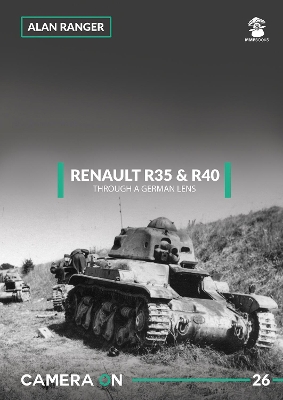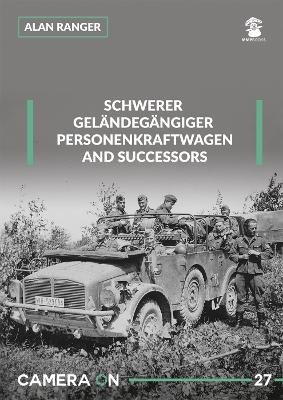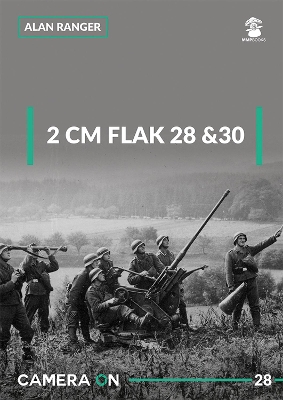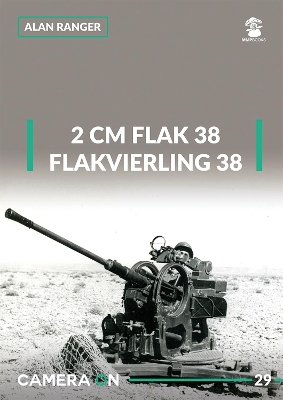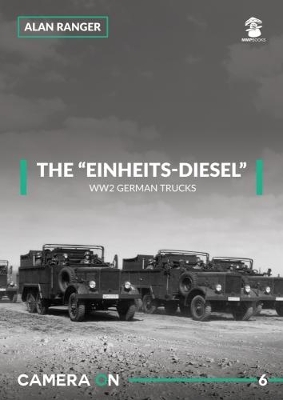Camera on
24 primary works • 25 total works
Book 26
The Renault R35, an abbreviation of Char léger Modèle 1935 R (or R35), was a French light infantry tank of the Second World War.
Designed from 1933 and produced from 1936, the tank was intended as an infantry support light tank. To this end it was relatively well-armoured but slow and lacking a good anti-tank capacity, fitted only with a short 37 mm gun. At the outbreak of the war, the anti-tank role was more emphasized, leading to the development and eventual production from April 1940 of a sub-type with a more powerful longer gun, the Renault R40.
Following the defeat of France the R35/40 remained the most numerous French tank of the war; about 1,680 vehicles had been produced by June 1940.
In this volume the author provides a detailed impression of these tanks through original photographs taken during the war by German soldiers.
Designed from 1933 and produced from 1936, the tank was intended as an infantry support light tank. To this end it was relatively well-armoured but slow and lacking a good anti-tank capacity, fitted only with a short 37 mm gun. At the outbreak of the war, the anti-tank role was more emphasized, leading to the development and eventual production from April 1940 of a sub-type with a more powerful longer gun, the Renault R40.
Following the defeat of France the R35/40 remained the most numerous French tank of the war; about 1,680 vehicles had been produced by June 1940.
In this volume the author provides a detailed impression of these tanks through original photographs taken during the war by German soldiers.
Book 27
This latest photo-album in the 'Camera On' series contains 140 photographs of a broad selection of Germany's heavy off-road passenger vehicles in operation with the Wehrmacht during World War II. It includes both the Schwerer Gelandegangiger Personenkraftwagen and its successors, the Horch 108 type 1 and its licensed-built Ford type EG equivalents as well as the heavy cars built on light truck chassis such as the Styer 1500 and Mercedes 1500A & S types.
This book contains over 140 images of German heavy passenger cars photographed in operation in the conditions they had to work in. This volume illustrates these vehicles as the soldiers themselves viewed them in both their working environment and indeed in many cases the homes they had to live in, not the highly polished and sanitized views of the official photographers. The result is an invaluable reference for military historians and modellers.
This book contains over 140 images of German heavy passenger cars photographed in operation in the conditions they had to work in. This volume illustrates these vehicles as the soldiers themselves viewed them in both their working environment and indeed in many cases the homes they had to live in, not the highly polished and sanitized views of the official photographers. The result is an invaluable reference for military historians and modellers.
Book 28
This latest photo album in the 'Camera On' series covers in photographic detail the German usage of both the 20mm Flak 28 and the Flak 30 ant-aircraft guns. Both these weapons saw extensive action on all battle fronts of the second world war wherever the German armed forces saw service and whilst they were both excellent weapons at their time of development they both became less effective as ever faster and higher flying aircraft were produced by Germany's enemies.
The book contains over 140 photographs taken by ordinary German soldiers of both the 20mm Flak 28 and 30 as well as their crews whilst in service and many of the environments within which they had to operate. It illustrates these weapons as the soldiers themselves viewed them in both their fighting environment and in many cases just as a tool they lived with and had to look after on a daily basis, not the highly polished and sanitized views of the official photographers. This is an invaluable reference for military historians and modellers alike.
The book contains over 140 photographs taken by ordinary German soldiers of both the 20mm Flak 28 and 30 as well as their crews whilst in service and many of the environments within which they had to operate. It illustrates these weapons as the soldiers themselves viewed them in both their fighting environment and in many cases just as a tool they lived with and had to look after on a daily basis, not the highly polished and sanitized views of the official photographers. This is an invaluable reference for military historians and modellers alike.
Book 29
This latest photo album in the 'Camera On' series covers in photographic detail the German usage of the 20mm Flak 38 anti-aircraft gun and its quadruple mounting version, the Flakvierling 38. These weapons saw extensive action on all battlefronts of the second world war wherever the German armed forces saw service and whilst the 20mm Flak 38 was an excellent weapon when first developed, by the time it entered service even the German army knew that it was in need of a replacement weapon system and the Germans concentrated on 37mm weapons and above from then on. However, the Flak 38 still gave valued service against low flying aircraft and ground targets and proved to be a valued weapon throughout the war. It even saw service with some other nations well into the 1970s.
This book contains over 140 photographs taken by ordinary German soldiers of both the anti-aircraft guns as well as their crews in many of the areas within which they operated.
This book contains over 140 photographs taken by ordinary German soldiers of both the anti-aircraft guns as well as their crews in many of the areas within which they operated.
This new photo-album in the ""Camera On"" series contains over 100 photographs of the leichter geländegängiger Lastkraftwagen “Einheitsdiesel” (Standard Diesel Lorry).
The development of the standard lorry for the German military started in 1934. It was planned to develop vehicles with 2, 3 and 4 axles with payloads of 1.5, 2.5 and 4 tons, but in the end only the model with three axles and 2.5 tons payload entered serial production. Series production started in 1937 and ended in 1940 with more than 14,300 vehicles being built by nine different main vehicle producers. The “Einheits-Diesel” lorries were made identical by all nine manufacturers: Büssing-NAG, Daimler-Benz, FAUN, VOMAG, Henschel, Krupp, Magirus, MAN and Borgward.
Camera On: a new series of books on the equipment and operations of the German Wehrmacht in WW2. The focus is on the often ignored or overlooked soft-skinned, non-armoured, vehicles used by the German army.
These profusely illustrated photo-albums include a large number of previously unseen pictures, many from private sources in Germany.
The development of the standard lorry for the German military started in 1934. It was planned to develop vehicles with 2, 3 and 4 axles with payloads of 1.5, 2.5 and 4 tons, but in the end only the model with three axles and 2.5 tons payload entered serial production. Series production started in 1937 and ended in 1940 with more than 14,300 vehicles being built by nine different main vehicle producers. The “Einheits-Diesel” lorries were made identical by all nine manufacturers: Büssing-NAG, Daimler-Benz, FAUN, VOMAG, Henschel, Krupp, Magirus, MAN and Borgward.
Camera On: a new series of books on the equipment and operations of the German Wehrmacht in WW2. The focus is on the often ignored or overlooked soft-skinned, non-armoured, vehicles used by the German army.
These profusely illustrated photo-albums include a large number of previously unseen pictures, many from private sources in Germany.
